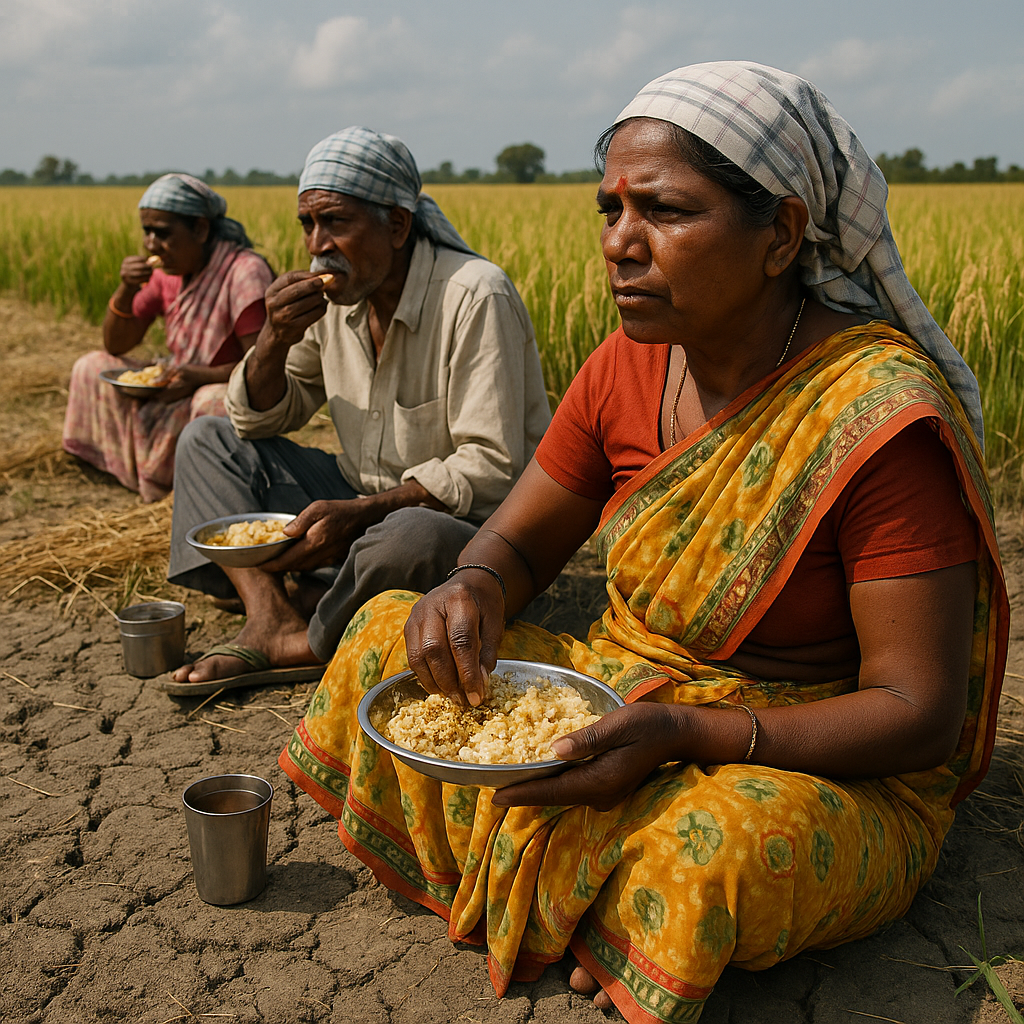Workday diet gaps fuel hidden hunger crisis in rural South India
The analysis found that women, particularly those from Most Backward Castes (MBC) and Scheduled Castes (SC), are disproportionately affected by workday-related dietary shifts. On days when they engage in wage labor, women often reduce their own food intake, delay meals, or opt for simpler foods due to the dual burden of earning income and managing household cooking. This gendered dimension of food access remains underrecognized in current nutritional interventions.

- Country:
- India
A new study titled “Food Security in South India: Workday vs. Non-Workday Variations”, published in South Asia Research (2025), reveals that daily labor routines among rural populations significantly affect food consumption and nutritional adequacy in South India. The study exposes a stark divide in dietary quality between workdays and non-workdays, posing a hidden threat to food security.
Based on primary data collected from 981 households across 33 villages in Thanjavur District of Tamil Nadu, the research highlights a critical gap in Indian food policy frameworks: the lack of attention to temporal patterns in nutrition. While India’s national efforts focus primarily on calorie availability and income poverty, this study shifts the spotlight to short-term fluctuations driven by daily employment status, particularly among women and socially marginalized groups.
The findings indicate that on workdays, especially during agricultural labor cycles, people eat less diverse and less nutritious food. The time and energy constraints imposed by field work disrupt normal cooking patterns, leading to reliance on leftovers, quick meals, and lower intake of nutrient-rich items like vegetables and pulses. By contrast, non-workdays enable more stable, higher-quality diets.
What groups are most vulnerable and why?
The analysis found that women, particularly those from Most Backward Castes (MBC) and Scheduled Castes (SC), are disproportionately affected by workday-related dietary shifts. On days when they engage in wage labor, women often reduce their own food intake, delay meals, or opt for simpler foods due to the dual burden of earning income and managing household cooking. This gendered dimension of food access remains underrecognized in current nutritional interventions.
In terms of household dynamics, the study shows that children and elderly family members benefit from non-workdays when caregivers are more available to prepare meals. However, during intensive work weeks, such as harvest periods, the quality of children's diets declines, with increased dependence on rice-based meals and decreased intake of vegetables and protein.
Interestingly, the variation in dietary quality across workdays and non-workdays was not strongly influenced by age or type of livelihood (agricultural vs. non-agricultural). Rather, the key factor was whether household members were actively engaged in wage labor on a given day. This indicates that income level alone is not a sufficient predictor of food security in these communities.
Moreover, many households experienced a drop in meal frequency on workdays. Some skipped breakfast or lunch entirely due to logistical barriers, lack of time, poor access to food while working outdoors, or the absence of supportive infrastructure. These day-specific nutritional deficits, if frequent, could accumulate into chronic health challenges, particularly for women and children.
The research presents compelling evidence that diet diversity and nutrient sufficiency cannot be understood solely through static metrics such as monthly household surveys. Instead, daily routines and labor cycles must be integrated into food security assessments.
What policy innovations could mitigate day-based food insecurity?
India’s food security infrastructure, dominated by mechanisms like the Public Distribution System (PDS), Midday Meal Scheme, and Integrated Child Development Services, needs to evolve beyond annual or monthly nutritional support. These systems do not currently address the intra-week dietary swings driven by the time-poverty of rural laborers, the research argues.
The researchers propose the development of mobile or on-site meal services for rural workers. Inspired by models like Tamil Nadu’s Amma Canteens, these services could offer ready-to-eat, nutrient-rich meals at affordable prices near fields and work sites, ensuring that laborers, especially women, have access to proper food during high-demand workdays.
Another recommendation is the institutional recognition of women’s dual labor burden. Policies must account for the reduced cooking capacity on workdays and support innovations such as fuel-efficient stoves, community kitchens, and pre-cooked meal distribution on days of heavy labor engagement.
The study also suggests incorporating a temporal lens into existing employment guarantee programs like MGNREGA. Timing of workdays and food support should be aligned, enabling local bodies to provide midday rations or meal coupons for active workers during shifts.
In addition, the researchers call for more granular data collection practices. National surveys like NFHS and NSSO should integrate short-term food consumption tracking to detect weekday/weekend differences and their nutritional consequences. Without such high-frequency data, policy efforts will continue to overlook the true scope of malnutrition risks in dynamic labor environments.
The research also highlights the need for better health surveillance systems that track food-related fatigue, anemia, and child development outcomes over short time cycles, rather than aggregating effects annually or biannually.
- FIRST PUBLISHED IN:
- Devdiscourse










